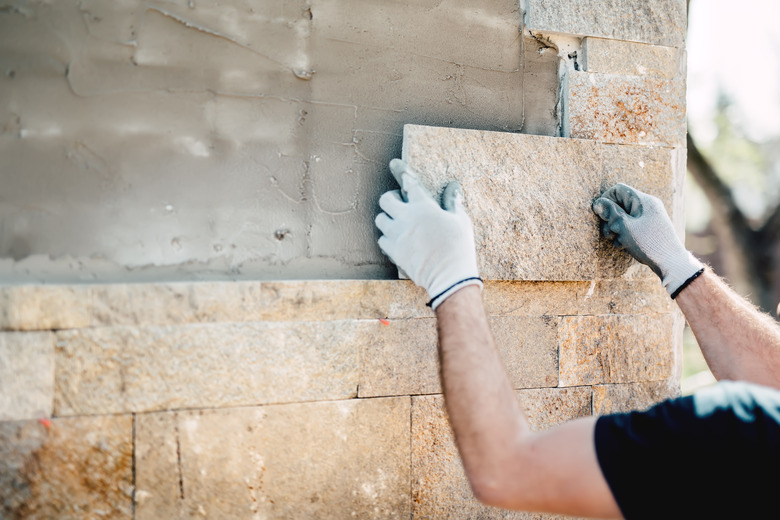How To Paint Stone Tiles
Stone tiles can last for decades or longer, which is great in terms of longevity, but not so much in terms of revamping the room where they're used. Rather than replacing the tiles outright, give them a completely new look by painting them. Painting a stone backsplash, for instance, is a great way to save money while updating the space. The best way to paint the tile really depends on the type of tile and where it's used.
Clean the Tiles First
Clean the Tiles First
No matter what type of stone tile you want to paint, it must be clean and free from dust and dirt first. Mix a squirt or two of dish soap into a bucket of warm water. Dip a sponge into the solution, wring most of the liquid out, then wipe the tiles down. Allow the tiles to dry completely before painting them. If the tiles are grouted in place, the grout must be dry as well.
Finding the Right Paint
Finding the Right Paint
As with any surface, choosing the wrong type of paint may mean the paint peels off prematurely or doesn't adhere at all. Natural stone tile, such as slate, requires a latex paint designed for masonry and stucco_._ Standard interior acrylic latex paint also works well, provided the tiles are porous and clean. Also, purchase a masonry sealant to go over the painted tiles once the paint dries.
Glazed tiles, like the ones used on bathroom walls and kitchen backsplashes, are different than natural stone tiles. The hard, shiny surface on the baked tile does not absorb paint the way a natural stone tile does. To paint glazed tile, use either a latex or epoxy paint.
Painting Travertine Tile
Painting Travertine Tile
Travertine tile is quite porous, so it needs to be sealed. Apply a masonry primer/sealant using a brush or roller, then allow the tiles to dry for several hours or as recommended on the paint label.
Paint the tile with a masonry and stucco paint or with an acrylic latex paint. If you plan to paint designs on the tile, allow the initial background color to dry completely before adding stenciled or handpainted designs in another paint color. Once all the paint dries, apply at least one coat of a masonry sealant. The better sealed the tile, the more durable it will be in the long run.
Painting Slate Tile
Painting Slate Tile
Slate tile paint jobs do not require an initial coating with a primer/sealant unless the slate is in an area that may need frequent washing. Slate is less porous than travertine, so it won't absorb the primer or paint quite as much.
Paint the slate with a masonry and stucco latex paint. Apply a coat of masonry sealant atop the dried paint.
If you want to paint stone tile in the bathroom, consider where it is, first. Painting bathroom tile is best done in areas that don't get extremely wet often, such as walls or even the floor. It's best not to paint tiles in the shower or tub surround area, as the moisture will make the paint bubble or even peel. If you want to paint those areas anyway, purchase a specialty paint designed for tubs and tile.
Painting Fireplace Stone
Painting Fireplace Stone
If the stone surrounding your fireplace needs a fresh color to bring it up to date, that stone or brick can also be painted. Once the stones are clean, prime them with a masonry primer. Once that primer dries, coats of masonry latex paint or a standard latex paint give the fireplace a new color. Do not paint the interior of the fireplace if you actively burn wood, as the paint may not be fire resistant. A specialty fire-resistant paint is better for such scenarios.
Seal the fireplace with a masonry sealer if you prefer afterwards. Since you probably don't need to wash the fireplace stone, a sealant isn't entirely necessary in this case.
